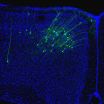(Press-News.org) This news release is available in Spanish.
Genomes accumulate changes and mutations throughout evolution. These changes have resulted in a huge diversity of species and in different traits between us. But animal cells, whether they are from a fly or a human, work similarly: they have common molecular mechanisms.
Based on this premise, an international consortium with participation of scientists from the Centre for Genomic Regulation in Barcelona have compared the transcriptome (the RNA complement of a species' cell) of different animal species. They used data from two big research consortia: the Encyclopedia of DNA Elements (ENCODE), which gathers information about human functional elements, and the Model Organism ENCODE (mod-ENCODE) which has the corresponding information about the fly and the worm. As a result, they have determined sets of genes that are likely to work together, independently of the organism in which they are found, and must therefore be essential for the whole animal kingdom.
"This paper is important since it is the first time such distant species have been compared in such an accurate manner", explains Sarah Djebali, co-author of this paper and researcher at the CRG. The international team of collaborators performed and uniformly processed 575 RNA-seq experiments in many different tissues and in several developmental and perturbation conditions. "These findings give us a map of highly important regions of the genome that will guide the scientific community in future research projects related to cell biology and, in extension, to disease", adds Dr. Djebali.
Apart from determining these key sets of co-expressed genes, the researchers have also observed that the three species have a similar proportion of transcription outside known coding and non-coding genes (coding meaning coding for a protein). Furthermore, they have seen that those sets of genes that seem to function together in the 3 animals are related to development, and confirmed the previous hypothesis that all animals go through a particular stage in embryonic development where the expression of the genes common to all animals is the most similar (called the "hourglass" hypothesis). Finally, comparing DNA and RNA states they have also been able to describe a model to quantitatively predict the gene expression levels from the DNA activity. A kind of universal model based on a single set of parameters independent of the organism you are looking at.
The role of the Computational Biology of RNA Processing group at the CRG led by Roderic Guigó together with scientists of the Yale University has been to provide advice on the human transcriptome, since the human RNA-seq data was first analysed at the CRG in the framework of the ENCODE project.
This is a new example of how bioinformatics is a crucial contributor to biomedical research.
INFORMATION:
Worms, flies and humans... Our common genomic legacy, key to understanding cell biology
CRG researchers contribute to a project that pointed out key sets of co-expressed genes that may be fundamental for animal cells
2014-08-27
ELSE PRESS RELEASES FROM THIS DATE:
Snowfall in a warmer world
2014-08-27
If ever there were a silver lining to global warming, it might be the prospect of milder winters. After all, it stands to reason that a warmer climate would generate less snow.
But a new MIT study suggests that you shouldn't put your shovels away just yet. While most areas in the Northern Hemisphere will likely experience less snowfall throughout a season, the study concludes that extreme snow events will still occur, even in a future with significant warming. That means that, for example, places like Boston may see less snowy winters overall, punctuated in some years ...
Researchers change the emotional association of memories
2014-08-27
By manipulating neural circuits in the brain of mice, scientists have altered the emotional associations of specific memories. The research, led by Howard Hughes Medical Institute investigator Susumu Tonegawa at the Massachusetts Institute of Technology (MIT), reveals that the connections between the part of the brain that stores contextual information about an experience and the part of the brain that stores the emotional memory of that experience are malleable.
Altering those connections can transform a negative memory into a positive one, Tonegawa and his MIT colleagues ...
Witnessing the early growth of a giant
2014-08-27
Elliptical galaxies are large, gas-poor gatherings of older stars and are one of the main types of galaxy along with their spiral and lenticular relatives. Galaxy formation theories suggest that giant elliptical galaxies form from the inside out, with a large core marking the very first stages of formation.
However, evidence of this early construction phase has eluded astronomers — until now.
Astronomers have now spotted a compact galactic core known as GOODS-N-774, and nicknamed Sparky [1]. It is seen as it appeared eleven billion years ago, just three billion years ...
Stop and listen: Study shows how movement affects hearing
2014-08-27
DURHAM, N.C. -- When we want to listen carefully to someone, the first thing we do is stop talking. The second thing we do is stop moving altogether. This strategy helps us hear better by preventing unwanted sounds generated by our own movements.
This interplay between movement and hearing also has a counterpart deep in the brain. Indeed, indirect evidence has long suggested that the brain's motor cortex, which controls movement, somehow influences the auditory cortex, which gives rise to our conscious perception of sound.
A new Duke study, appearing online August 27 ...
NASA sees massive Marie close enough to affect southern California coast
2014-08-27
Two NASA satellites captured visible and infrared pictures that show the massive size of Hurricane Marie. Marie is so large that it is bringing rough surf to the southern coast of California while almost nine hundred miles west of Baja California.
On August 26 at 19:05 UTC (3:05 p.m. EDT) NASA's Terra satellite captured a visible image of Hurricane Marie drawing in the small remnants of Karina. Marie is over 400 miles in diameter, about the distance from Washington, D.C. to Boston, Massachusetts. Hurricane force winds extend outward up to 60 miles (95 km) from the center ...
Scripps Research Institute scientists link alcohol-dependence gene to neurotransmitter
2014-08-27
LA JOLLA, CA – August 27, 2014 – Scientists at The Scripps Research Institute (TSRI) have solved the mystery of why a specific signaling pathway can be associated with alcohol dependence.
This signaling pathway is regulated by a gene, called neurofibromatosis type 1 (Nf1), which TSRI scientists found is linked with excessive drinking in mice. The new research shows Nf1 regulates gamma-aminobutyric acid (GABA), a neurotransmitter that lowers anxiety and increases feelings of relaxation.
"This novel and seminal study provides insights into the cellular mechanisms of ...
Expression of privilege in vaccine refusal
2014-08-27
DENVER (August 27, 2014) – Not all students returning to school this month will be up to date on their vaccinations. A new study conducted by Jennifer Reich, a researcher at the University of Colorado Denver, shows that the reasons why children may not be fully vaccinated depends on the class privilege of their mothers.
According to the National Network for Immunization Information, three children per 1000 in the U.S. have never received any vaccines, with almost half of all children receiving vaccines later than recommended. The number of unvaccinated children has led ...
Dosage of HIV drug may be ineffective for half of African-Americans
2014-08-27
Many African-Americans may not be getting effective doses of the HIV drug maraviroc, a new study from Johns Hopkins suggests. The initial dosing studies, completed before the drug was licensed in 2007, included mostly European-Americans, who generally lack a protein that is key to removing maraviroc from the body. The current study shows that people with maximum levels of the protein — including nearly half of African-Americans — end up with less maraviroc in their bodies compared to those who lack the protein even when given the same dose. A simple genetic test for the ...
Scientists plug into a learning brain
2014-08-27
Learning is easier when it only requires nerve cells to rearrange existing patterns of activity than when the nerve cells have to generate new patterns, a study of monkeys has found. The scientists explored the brain's capacity to learn through recordings of electrical activity of brain cell networks. The study was partly funded by the National Institutes of Health.
"We looked into the brain and may have seen why it's so hard to think outside the box," said Aaron Batista, Ph.D., an assistant professor at the University of Pittsburgh and a senior author of the study published ...
Pitt and Carnegie Mellon engineers discover why learning can be difficult
2014-08-27
PITTSBURGH—Learning a new skill is easier when it is related to ability that we already possess. For example, a trained pianist might learn a new melody more easily than learning how to hit a tennis serve.
Neural engineers from the Center for the Neural Basis of Cognition (CNBC)—a joint program between the University of Pittsburgh and Carnegie Mellon University—have discovered a fundamental constraint in the brain that may explain why this happens. Published as the cover story in the Aug. 28, 2014, issue of Nature, they found for the first time that there are constraints ...
LAST 30 PRESS RELEASES:
School feeding programs lead to modest but meaningful results
Researchers develop AI Tool to identify undiagnosed Alzheimer's cases while reducing disparities
Seaweed based carbon catalyst offers metal free solution for removing antibiotics from water
Simple organic additive supercharges UV treatment of “forever chemical” PFOA
£13m NHS bill for ‘mismanagement’ of menstrual bleeds
The Lancet Psychiatry: Slow tapering plus therapy most effective strategy for stopping antidepressants, finds major meta-analysis
Body image issues in adolescence linked to depression in adulthood
Child sexual exploitation and abuse online surges amid rapid tech change; new tool for preventing abuse unveiled for path forward
Dragon-slaying saints performed green-fingered medieval miracles, new study reveals
New research identifies shared genetic factors between addiction and educational attainment
Epilepsy can lead to earlier deaths in people with intellectual disabilities, study shows
Global study suggests the underlying problems of ECT patients are often ignored
Mapping ‘dark’ regions of the genome illuminates how cells respond to their environment
ECOG-ACRIN and Caris Life Sciences unveil first findings from a multi-year collaboration to advance AI-powered multimodal tools for breast cancer recurrence risk stratification
Satellite data helps UNM researchers map massive rupture of 2025 Myanmar earthquake
Twisting Spins: Florida State University researchers explore chemical boundaries to create new magnetic material
Mayo Clinic researchers find new hope for toughest myeloma through off-the-shelf immunotherapy
Cell-free DNA Could Detect Adverse Events from Immunotherapy
American College of Cardiology announces Fuster Prevention Forum
AAN issues new guideline for the management of functional seizures
Could GLP-1 drugs affect risk of epilepsy for people with diabetes?
New circoviruses discovered in pilot whales and orcas from the North Atlantic
Study finds increase in risk of binge drinking among 12th graders who use 2 or more cannabis products
New paper-based technology could transform cancer drug testing
Opioids: clarifying the concept of safe supply to save lives
New species of tiny pumpkin toadlet discovered in Brazil highlights need for conservation in the mountain forests of Serra do Quiriri
Reciprocity matters--people were more supportive of climate policies in their country if they believed other countries were making significant efforts themselves
Stanford Medicine study shows why mRNA-based COVID-19 vaccines can cause myocarditis
Biobanking opens new windows into human evolution
Sky-high smoke
[Press-News.org] Worms, flies and humans... Our common genomic legacy, key to understanding cell biologyCRG researchers contribute to a project that pointed out key sets of co-expressed genes that may be fundamental for animal cells




